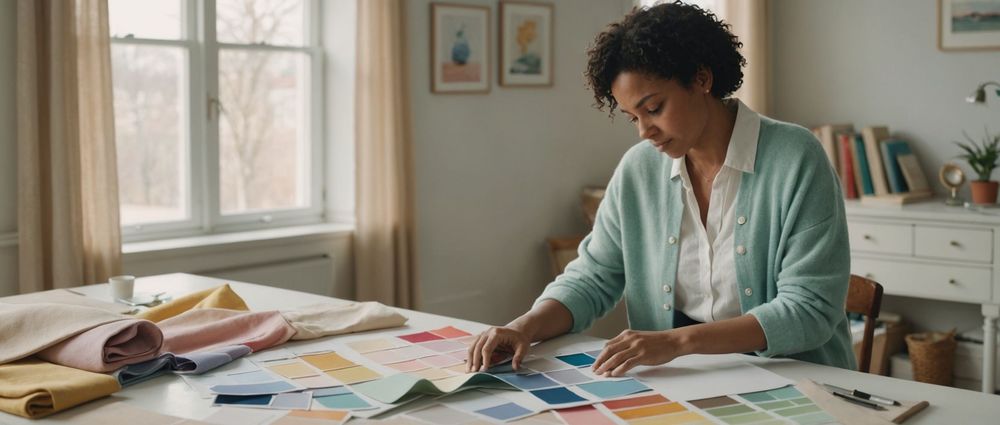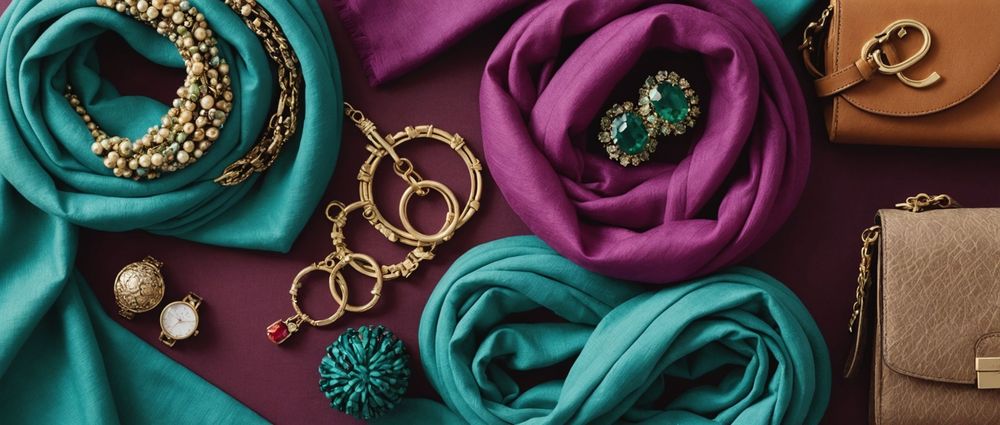Understanding which colours complement you can transform your wardrobe, enhance your style, and boost your confidence. The right shades not only brighten your appearance but also reflect your personality and sense of self. Since everyone has a unique skin tone, eye colour, and hair colour, identifying your perfect palette can lead you to outfits that make you feel your best. This article will explore actionable strategies to help you discover your ideal colours, ensuring that you always look and feel fabulous.
Understanding Your Skin Tone

Your skin tone plays a critical role in determining which colours suit you best. Generally, skin tones are categorized into three main types: warm, cool, and neutral. Understanding your skin tone can guide your colour choices effectively. To determine your skin tone, consider these factors:
- Vein Color: Look at the veins on your wrist. If they appear blue or purple, you likely have a cool skin tone. If they are greenish, you probably have a warm skin tone.
- Jewellery Test: Experiment with gold and silver jewellery. Gold tends to complement warm skin tones better, while silver is more flattering for cool tones.
- Sun Exposure: Notice how your skin reacts to sun exposure. If you tan easily, you may have a warm skin tone. Conversely, if you tend to burn, your skin tone is likely cool.
By identifying your skin tone, you can narrow down the colour palette that enhances your natural beauty, leading to a more harmonious appearance.
Recognizing Your Undertones
While your skin tone is about the surface, undertones are the subtle hues that lie beneath. There are three types of undertones: warm, cool, and neutral. Knowing your undertone can further refine your colour choices. Undertones can be recognized through the following methods:
- White Test: Hold a pure white fabric next to your face. If your complexion appears brighter, you may have cool undertones. If it looks better with off-white or cream, your undertones are warm.
- Color Filters: Try wearing various colours to see which shades make your skin glow. If orange, yellow, or earthy tones light you up, you have warm undertones. If blues, purples, or greens enhance your look, you are likely cool-toned.
- Response to Colors: Pay attention to how you feel in different colours. Warmer colours may suit you if you feel lively and vibrant, while cooler tones might make you feel more relaxed and sophisticated.
Identifying your undertones is crucial in selecting shades that truly resonate with you and create a balanced appearance.
Choosing Your Colour Palette

Once you identify your skin tone and undertones, it’s time to choose your colour palette. Here are various colours that typically work well for each undertone:
Warm Undertones
- Earthy shades like browns, oranges, and yellows.
- Warm reds, peach, coral, and cream.
- Olive green and certain shades of gold.
Cool Undertones
- Shades of blue, purple, and green, such as emerald and teal.
- Cool reds, pinks, and fuchsias.
- Grey tones and crisp white.
Neutral Undertones
- Shades that mix warm and cool, like jade green or blush pink.
- Soft, muted shades including lavender and soft yellow.
- Greys and taupes with balanced warmth or coolness.
With these colour recommendations in mind, you can create a versatile wardrobe that allows for personal expression while ensuring you look great in everything you wear.
Practical Applications: Experimenting with Colour
Now that you have a better understanding of your ideal colours, it’s important to experiment to see how they work for you in practice. Here are some practical tips to apply your new knowledge:
- Start Small: Introduce new shades through accessories like scarves, hats, or bags before investing in larger clothing items.
- Make It Fun: Host a personal fashion show at home, trying on outfits with different colours to see what makes you feel best.
- Observe Reactions: Pay attention to compliments and feedback from friends and family when wearing your chosen colours. It can provide valuable insight into what works.
By actively experimenting with your wardrobe, you gain a better understanding of which colours resonate with you and build a cohesive, stylish look that reflects your personality.
Conclusion
Finding the perfect colours that complement your skin tone and undertone is a powerful tool in fashion. By understanding your unique features and experimenting with different shades, you can develop a personal colour palette that enhances your natural beauty and boosts your confidence. Remember, style is not just about clothing; it’s about expressing who you are through the choices you make. Embrace the process, enjoy the experimentation, and you will surely find the shades that make you shine.
FAQs
1. How can I quickly determine my skin tone?
You can determine your skin tone by checking the colour of your veins, doing the jewellery test, or observing how your skin reacts to sun exposure.
2. What if I have both warm and cool undertones?
If you have balanced tones, you are considered neutral and can wear a variety of shades from both warm and cool palettes.
3. Can I wear colours outside my identified palette?
Absolutely! Fashion is ultimately about expression, so feel free to experiment with colours outside your palette that you love.
4. Are there any colours that universally look good on everyone?
Some colours, like navy, teal, and certain shades of red, are often flattering on a wide range of skin tones, but the key is to find the right shade for your individual characteristics.
5. How can I incorporate my perfect colours into my wardrobe?
Start with smaller items like accessories, and gradually add larger clothing pieces that incorporate your best shades. Mixing and matching within your palette can also create a versatile wardrobe.





